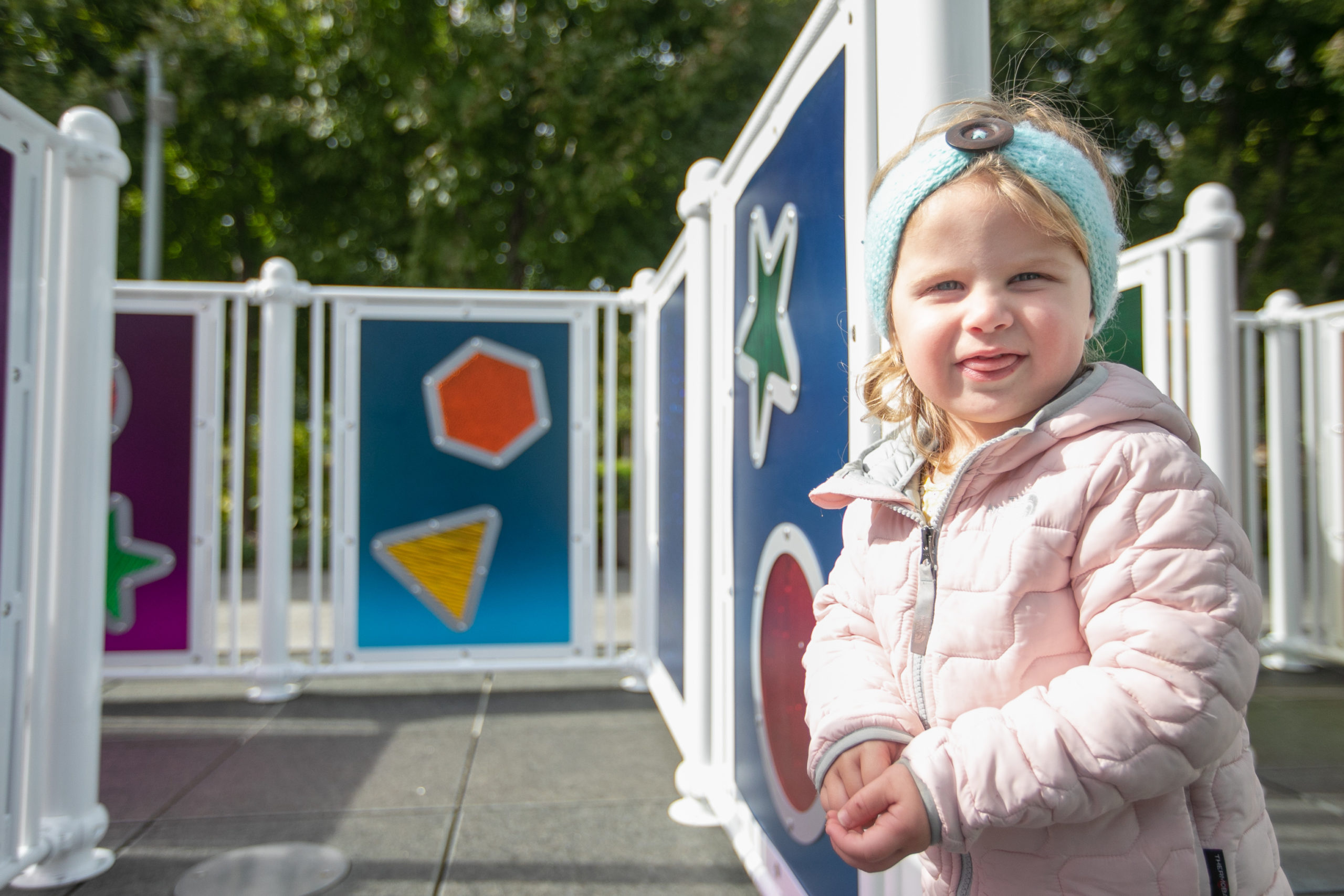Playground Design for Hearing Impaired Kids

Last month, we touched on creating playground spaces that are both accessible and inclusive. We’d like to dive in a little deeper into this topic this month and talk more about playground design for hearing impaired kids.
The CDC estimates that 15% of kids have hearing loss at some level, with over 30,000 of these kids having a surgically implanted sound receiver known as a cochlear implant. While the implant doesn’t provide a complete remedy for hearing loss, it does give these kids an enhanced ability to hear and understand sounds from their environment, including speech and some background noise. The implants offer a sort of framework for sound, and these children fill in the gaps with their own understanding of speech and noise relating to the world around them.
As you can imagine, these kids need play spaces that are safe while affording them the opportunity to communicate with other kids. So how do you make that possible?
1. Incorporate Sensory Play Experiences
For kids with hearing loss, information about the world around them comes from the other senses. For a truly inclusive play space, consider elements such as water tables and sandboxes. Don’t be afraid to incorporate some sound elements as well since the kids can still feel the vibrations of noises, even if they can’t hear them clearly.
2. Safety with Visual Elements
Because these kids may not be able to hear auditory cues, such as a whistle or an attention-grabbing shout, add some visual cues to communicate with them. Think about things like flags to indicate end of play time for kids on school playgrounds, and even flashing lights to indicate an emergency or safety issue.
3. Clear Lines of Communication
Add elements such as a blackboard or dry erase board so you can communicate with kids who have hearing loss. This also gives the kids an avenue to communicate with parents and other children on the playground.
Take it a step further and post basic sign-language for common words such as “play,” “help,” “yes” and “no” so other children can communicate with hearing impaired kids.
4. Control the Background Noise
To make it easier for these kids to focus, take steps to control background noise such as traffic and the energetic play from other children at your playground. Consider footing made from sound-absorbing materials, such as rubberized tiles. Landscaping that includes larger trees or shrubbery will assist with lessening external noise, and a sound barrier such as a privacy fence or a stone or brick wall may help eliminate traffic sounds.
5. Consider Cochlear Implant-Friendly Surfaces
Plastic equipment, such as slides, creates static electricity. Not only can the shock be unpleasant, these surfaces can also create complications for kids with cochlear implants. The static shock can temporarily disrupt the functionality of these devices, in some cases rendering them inoperable until they can be recalibrated by an audiologist. For your playground to be truly inclusive, consider incorporating some metal slides and equipment to protect sensitive cochlear implants.
Let Metro Recreation Help You Design the Perfect Playground for Hearing Impaired Kids
Metro Recreation, in proud partnership with Miracle playground products, can help you create the perfect play space for kids with hearing impairments and furnish it with the perfect equipment for these kids. You can upgrade your existing playground or create an entirely new one with our innovative products. Browse our catalog now and find the best solutions for your inclusive, accessible playground design. Contact us now to let your playground journey begin.




